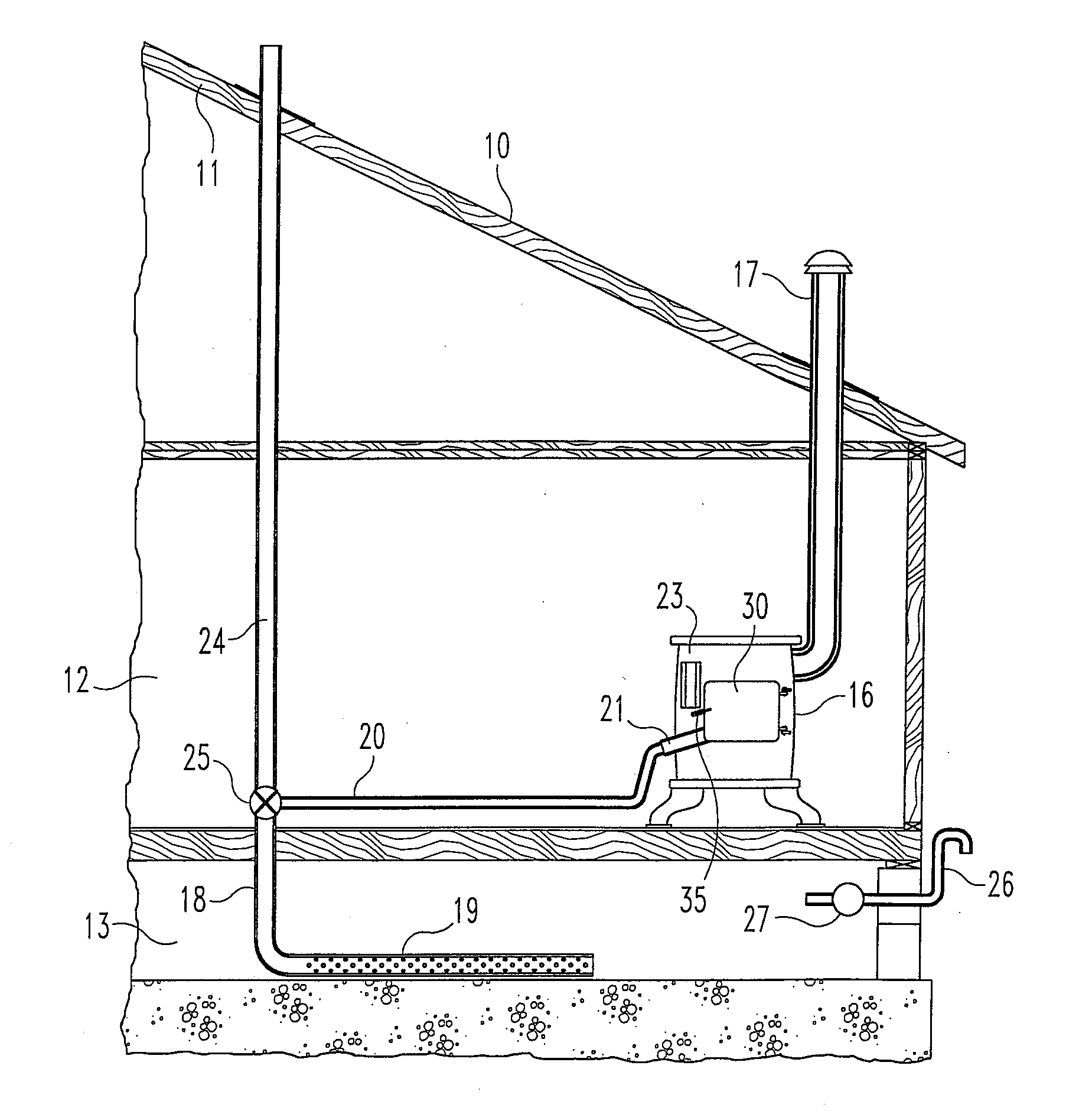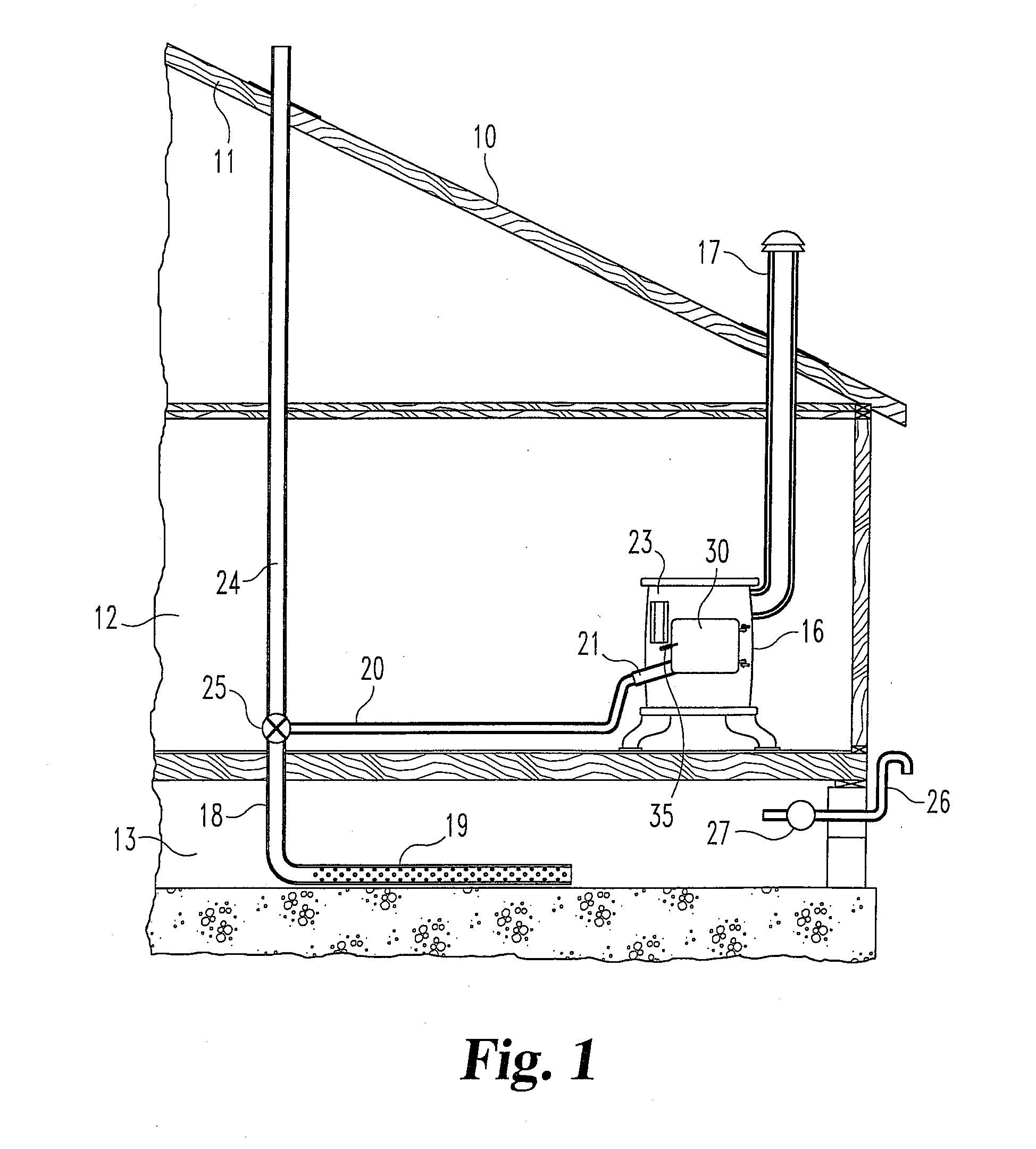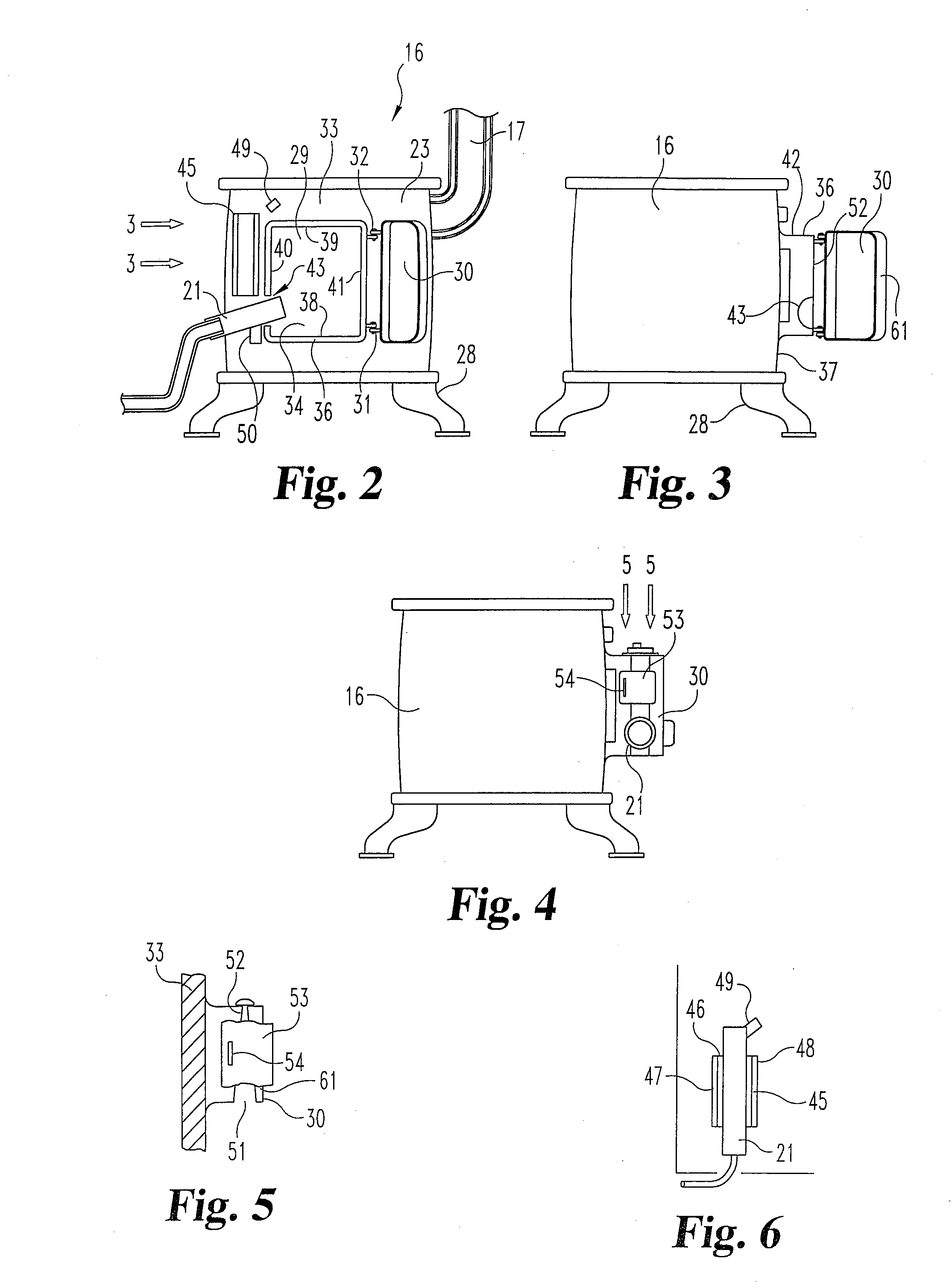Wood stove radon reduction system
a radon reduction and wood stove technology, applied in the field of wood stoves, can solve the problems of not only the initial cost of the system, but also the need for a blower, and the candle does not generate enough heat to heat the building, so as to achieve the effect of being able to adapt to a conventional wood stov
- Summary
- Abstract
- Description
- Claims
- Application Information
AI Technical Summary
Benefits of technology
Problems solved by technology
Method used
Image
Examples
Embodiment Construction
[0024]For the purposes of promoting an understanding of the principles of the invention, reference will now be made to the embodiment illustrated in the drawings and specific language will be used to describe the same. It will nevertheless be understood that no limitation of the scope of the invention is thereby intended, such alterations and further modifications in the illustrated device, and such further applications of the principles of the invention as illustrated therein being contemplated as would normally occur to one skilled in the art to which the invention relates.
[0025]Referring now more particularly to the FIG. 1, there is shown in fragment a building 10 having a roof 11, an interior room 12, and basement 13. A wood stove 16 is positioned within room 12 and has a conventional outlet flue 17 extending through the roof 11 to allow the exhaust gases from the stove to escape the building. A radon collection system 18 is provided to collect radon gas from the basement by a p...
PUM
 Login to View More
Login to View More Abstract
Description
Claims
Application Information
 Login to View More
Login to View More - R&D Engineer
- R&D Manager
- IP Professional
- Industry Leading Data Capabilities
- Powerful AI technology
- Patent DNA Extraction
Browse by: Latest US Patents, China's latest patents, Technical Efficacy Thesaurus, Application Domain, Technology Topic, Popular Technical Reports.
© 2024 PatSnap. All rights reserved.Legal|Privacy policy|Modern Slavery Act Transparency Statement|Sitemap|About US| Contact US: help@patsnap.com










